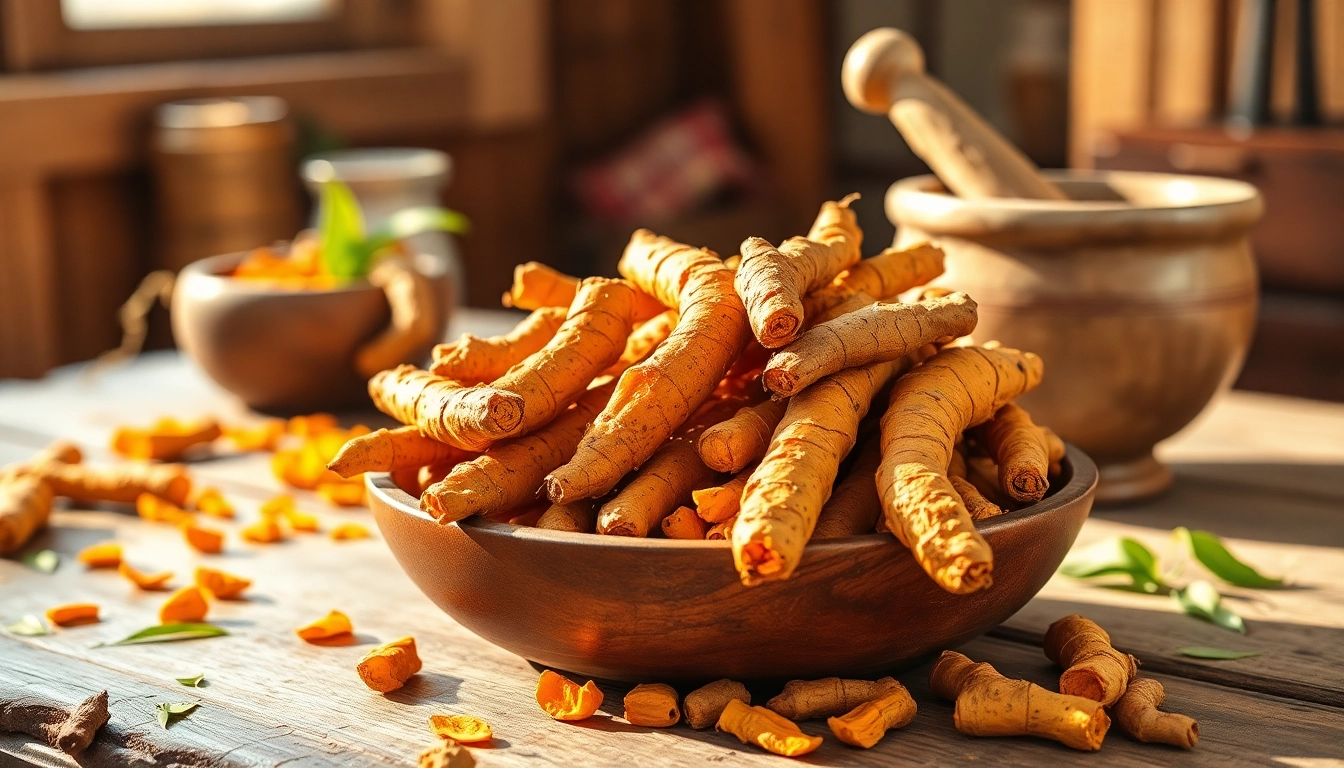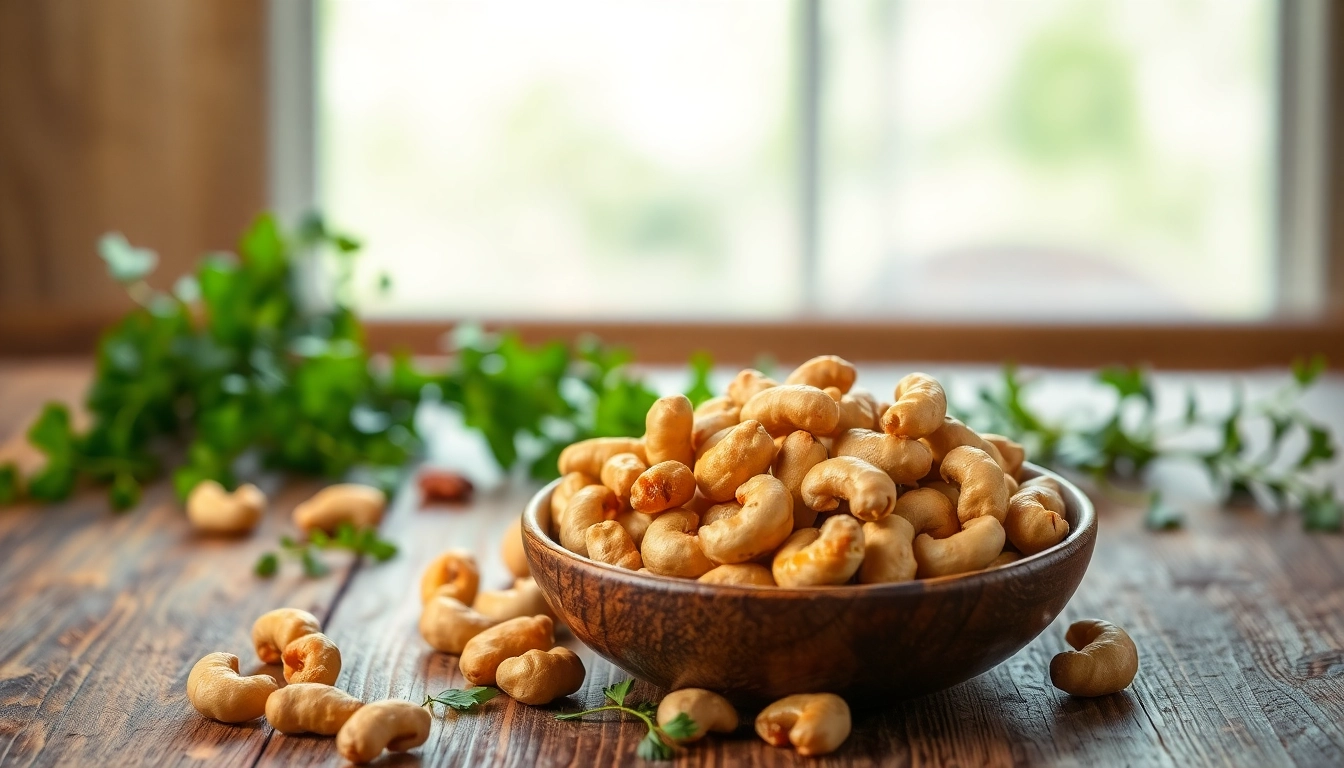Understanding Turmeric Root and Its Properties
What is Turmeric Root?
Turmeric Root, scientifically known as Curcuma longa, is a vibrant yellow rhizome native to India and Southeast Asia. This spice, deeply embedded in culinary traditions and ancient medicine, has become a staple in various cuisines for its distinct flavor and health benefits. Turmeric is primarily recognized for its active compound, curcumin, which is responsible for its striking color and many of its therapeutic properties. Recognized as a powerful antioxidant and anti-inflammatory agent, turmeric has gained considerable attention in both the culinary and health communities. If you’re interested in integrating this golden spice into your lifestyle, you can find excellent options like Turmeric Root from reputable sources.
Chemical Composition and Nutritional Value
The chemical makeup of turmeric root is complex and rich in various nutrients. Curcumin constitutes about 2-8% of turmeric, but it is also accompanied by other compounds, including turmerones, demethoxycurcumin, and bisdemethoxycurcumin, which contribute to its medicinal properties. The root is also a valuable source of essential minerals such as iron, potassium, and magnesium, along with vitamins like vitamin C and various B vitamins.
Nutritionally, a 100-gram serving of raw turmeric root provides roughly:
- Calories: 354
- Carbohydrates: 76 g
- Protein: 7.8 g
- Fat: 9.88 g
- Dietary Fiber: 25 g
- Vitamin C: 24 mg
- Calcium: 183 mg
This robust nutritional profile makes turmeric root not only a flavorful addition to meals but also a health-promoting food.
Different Varieties of Turmeric Root
There are several varieties of turmeric, each with unique qualities. The most common include:
- Finger Turmeric: Known for its unique finger-like shape, it has a high curcumin content and is often used in traditional medicine.
- White Turmeric: Lighter in color and flavor, this variety is used more frequently for its medicinal properties.
- Wild Turmeric: Also known as “natural turmeric,” this variety is less common and used primarily in folk medicine.
- Madras Turmeric: This variant is mostly cultivated in the Tamil Nadu region of India and is known for its robust color and flavor.
Understanding these varieties can help inform your choices when selecting turmeric for cooking or wellness purposes.
Health Benefits of Turmeric Root
Anti-Inflammatory Properties
One of the most celebrated benefits of turmeric root lies in its potent anti-inflammatory properties. Chronic inflammation is linked to several health conditions, including heart disease, diabetes, and cancer. Curcumin has been extensively studied for its ability to inhibit various inflammatory markers in the body, which can contribute to overall health and well-being.
Regular consumption of turmeric may help alleviate symptoms of inflammation-related conditions such as arthritis and inflammatory bowel disease. Clinical trials have shown that curcumin can reduce the levels of inflammatory cytokines—notably interleukin-6 (IL-6) and tumor necrosis factor-alpha (TNF-alpha)—which play major roles in mediating inflammation.
Boosting Immunity and Overall Health
Turmeric root is a powerful immune booster. Its high concentration of antioxidants helps combat oxidative stress, reducing the impact of free radicals that can damage cells and lead to diseases. Additionally, its curcumin content has been indicated to enhance the immune response by modulating the activities of various immune cells.
Incorporating turmeric into your diet can also help the body fend off infections and illnesses more effectively. Some studies suggest that turmeric can significantly lower the risk of upper respiratory tract infections, particularly in populations that regularly consume turmeric as part of their diet.
Pain Relief and Joint Health
Turmeric root has long been utilized for its pain-relieving properties. The anti-inflammatory effects of curcumin make it a popular natural remedy for conditions causing persistent joint pain, such as osteoarthritis and rheumatoid arthritis. Research indicates that turmeric supplementation can lead to a significant reduction in pain and improvement in function among individuals suffering from these conditions.
Moreover, turmeric’s role in enhancing the bioavailability of other nutrients, particularly in relation to joint health, positions it as a valuable addition to dietary regimes aimed at reducing joint discomfort.
How to Incorporate Turmeric Root into Your Diet
Recipes Featuring Fresh and Dried Turmeric Root
Integrating turmeric root into your dishes can be both simple and exciting. Here are a few delicious recipes:
- Turmeric Ginger Tea: Steep sliced fresh turmeric and ginger in hot water, add lemon and honey for a soothing drink.
- Golden Milk: Heat milk (or a dairy-free alternative) and whisk in turmeric, black pepper, and cinnamon for a nourishing beverage.
- Turmeric Chicken Stir-Fry: Marinate chicken pieces with turmeric, garlic, and ginger before stir-frying with vegetables for a flavorful dish.
For those who prefer dried turmeric, it can readily be added to soups, stews, and curries to bring a depth of flavor and health benefits to your meals.
Turmeric Root as a Spice in Cooking
As a spice, turmeric can be utilized in countless ways. It is a key ingredient in curry powders and can be sprinkled onto roasted vegetables, rice, and legumes. It not only imparts color but also adds a warm earthiness that can elevate the flavor profile of both savory and sweet dishes.
Additionally, turmeric’s combination with black pepper can increase curcumin absorption, enhancing its health benefits when consumed either in cooking or as part of a supplement.
Health Supplements: Extracts and Powders
For those seeking a concentrated source of curcumin, turmeric supplements come in the form of capsules, extracts, and powders. Many health stores and online retailers offer products specifically designed for enhanced bioavailability, such as those that include piperine (black pepper extract) to increase absorption rates.
When choosing a turmeric supplement, it is crucial to look for high-quality brands that provide third-party testing results to ensure purity and efficacy.
Best Practices for Selecting and Storing Turmeric Root
Choosing Quality Turmeric Root
When selecting turmeric root, freshness is key. Look for roots that are firm, smooth, and free of blemishes. The color should be bright and vibrant, indicating high curcumin content. Organic turmeric is often recommended to avoid exposure to pesticides and harmful chemicals that can diminish its health benefits.
A reputable source, such as well-regarded health stores or online suppliers, can provide information on the origin and quality of the turmeric you wish to purchase.
Proper Storage Techniques
To preserve the integrity of turmeric root, proper storage techniques are essential. Fresh turmeric should be kept in the refrigerator, ideally wrapped in a paper towel and placed in a breathable bag to avoid moisture accumulation. Dried turmeric root should be stored in an airtight container, kept in a cool, dark place to prevent degradation.
Turmeric powder, when stored correctly, can last up to 2-3 years without losing potency, provided it remains dry and free from contaminants.
Benefits of Organic Turmeric Root
Choosing organic turmeric root presents several advantages, including reduced exposure to pesticides and synthetic fertilizers. Organic farming practices often lead to richer soil and more nutrient-dense produce. This can enhance the bioactive compounds present in the turmeric root, maximizing its health benefits.
Furthermore, purchasing organic products can also support sustainable agriculture, contributing to environmental health.
Challenges and Precautions When Using Turmeric Root
Potential Side Effects and Interactions
While turmeric is generally safe for most people, it is crucial to be aware of potential side effects. Some individuals may experience gastrointestinal discomfort, nausea, or diarrhea if consumed in large amounts. It’s essential to approach supplementation and dietary inclusion with moderation.
Moreover, turmeric can interact with certain medications, including blood thinners and medications for diabetes, so consulting a healthcare professional before starting any new supplement regime is highly recommended.
Dosage Recommendations
There is no standardized dosage for turmeric root or curcumin supplements due to individual variations in metabolism and health conditions. However, general recommendations suggest that doses of 500-2000 mg of curcumin daily may yield health benefits. For therapeutic purposes, the dosage should align with healthcare provider recommendations based on specific health needs.
Assessing Quality in Turmeric Products
To ensure you are consuming high-quality turmeric products, check for certifications such as organic labeling or third-party testing. Be wary of companies that make unsupported claims about the health benefits of their products. Researching the brand’s reputation and reading customer reviews can also provide insight into product efficacy.
In summary, understanding how to properly select, store, and utilize turmeric root enhances both its culinary and health properties, making it a valuable addition to your diet.



